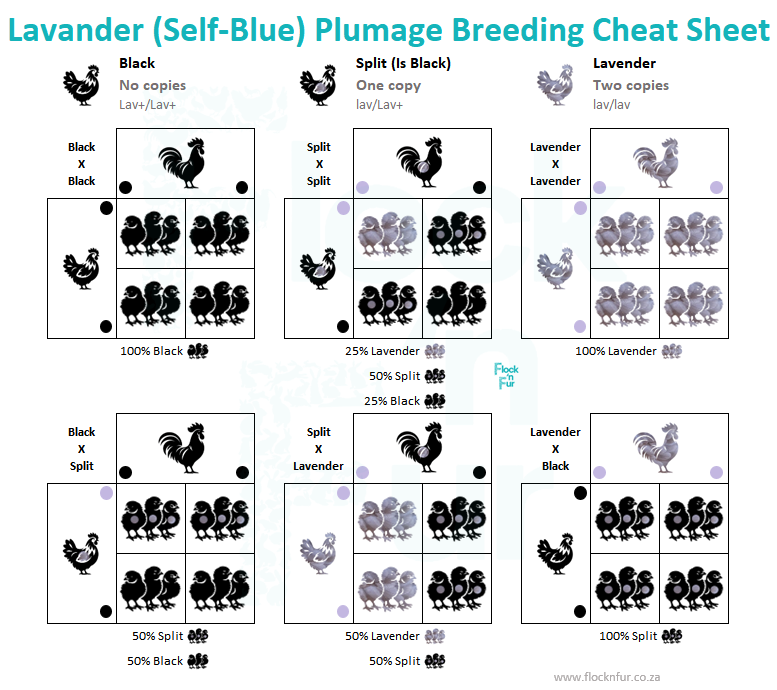Understanding the Differences Between Lavender and Blue in Chickens
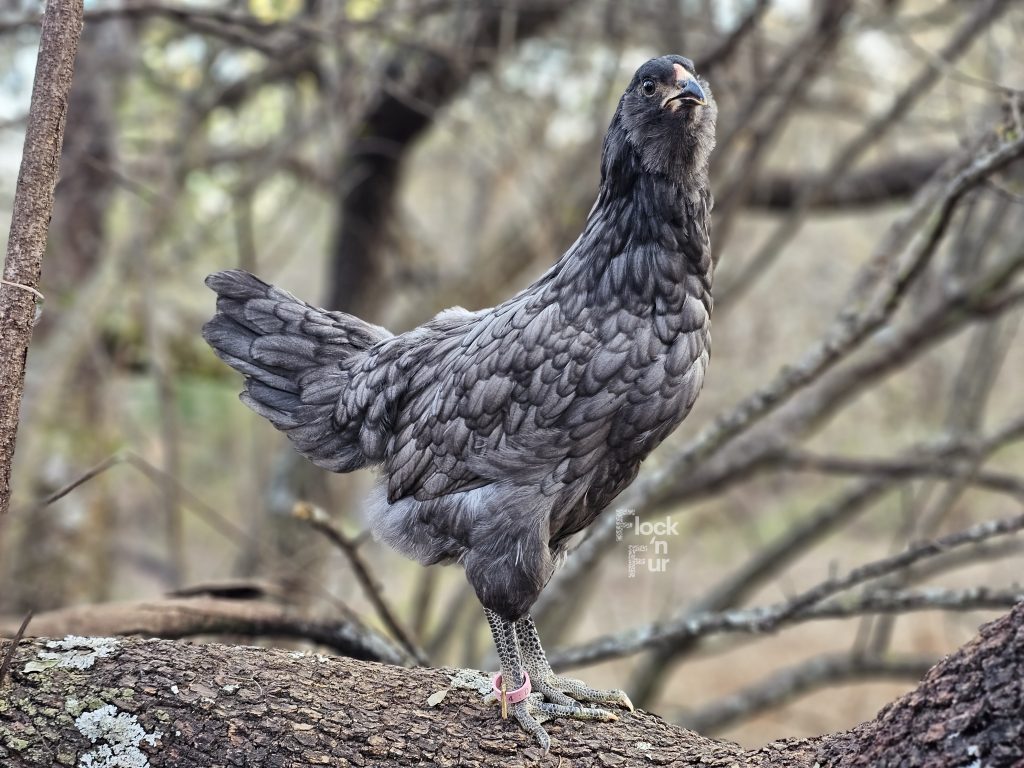
When it comes to breeding chickens for colour, it’s not uncommon for breeders to confuse Lavender and Blue. While these colours might appear similar at first glance, they are genetically distinct and produce different results in breeding programmes. This article aims to clarify these differences, providing a detailed explanation of the genetic mechanisms behind each colour and the expected outcomes from various breeding combinations.
Basic Genetics
Understanding the genetics behind these colours is crucial for successful breeding. The Lavender gene (lav) is recessive, requiring two copies (one from each parent) for the Lavender colour to manifest. In contrast, the Blue dilution gene (Bl) is incompletely dominant, producing different phenotypes (observable characteristics) depending on the number of copies present.
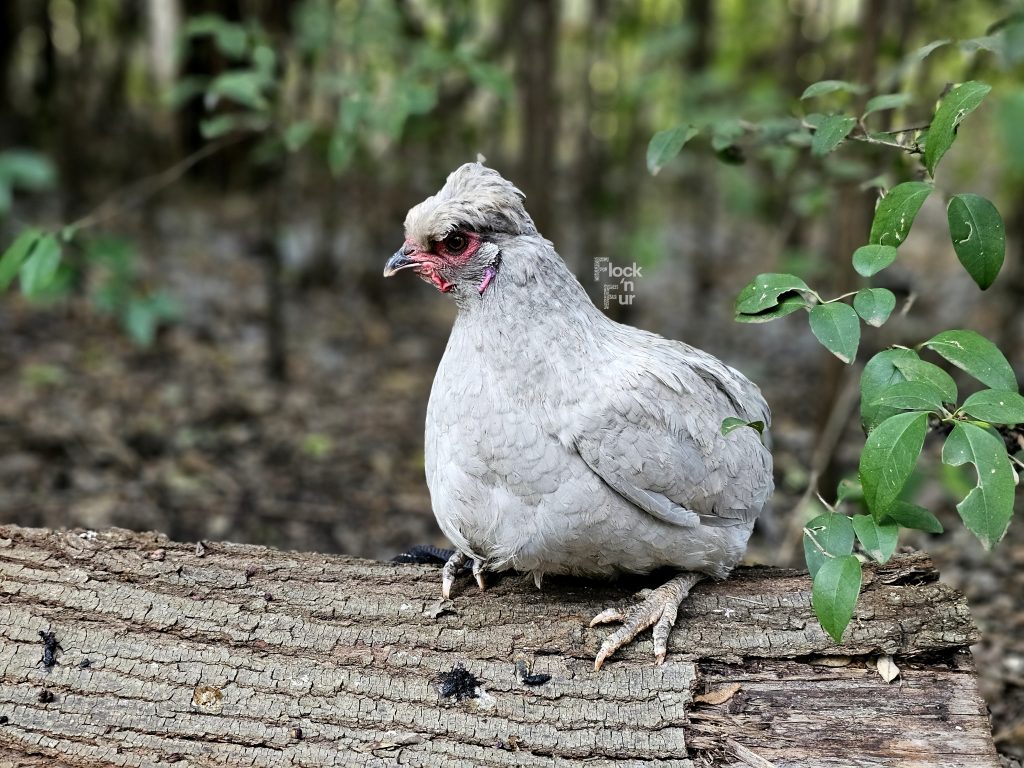
What is Blue?
Blue chickens derive their colour from the Blue dilution gene (Bl), which is incompletely dominant. This gene produces different plumage colours depending on the number of copies present. A single copy (Bl/bl+) results in blue plumage, while two copies (Bl/Bl) produce splash, a lighter, mottled colour. It is important to note that the blue colour can vary significantly. It can range from a dark blue, almost black, to a light blue that resembles lavender. Additionally, the pattern of the blue colour can differ, appearing as a uniform shade, mottled, or even laced
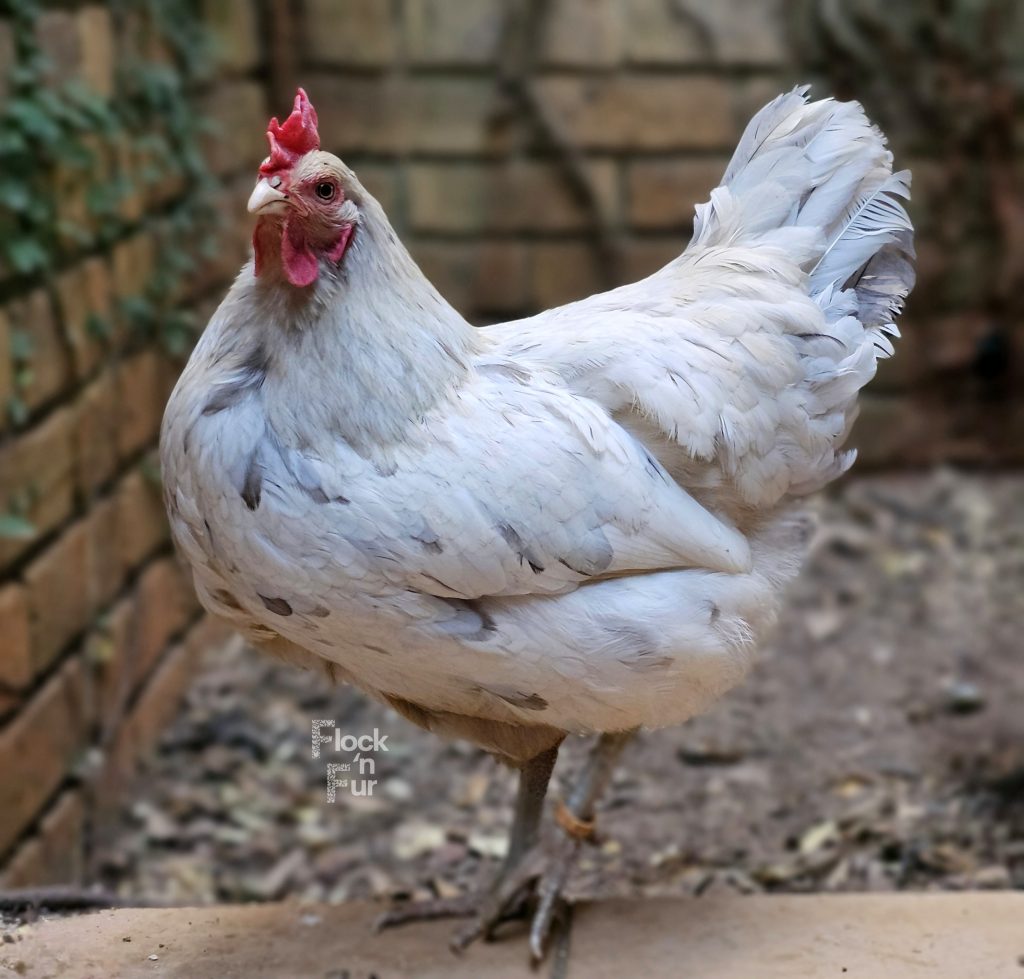
Due to the Blue dilution gene’s incomplete dominance, you cannot have blue in isolation. Blue chickens will never breed true to only blue chickens because of the nature of this gene. Thus, blue, black, and splash always go hand in hand, because you cannot have blue without having either black or splash, or both, depending on what you pair your blue with.

The Blue dilution gene dilutes black, meaning it can be combined with any other chicken plumage pattern that contains black. For example, a silver laced chicken can have blue lacing instead of black lacing on the silver, or even splash lacing. Another example is a wheaten chicken where the black has been diluted to blue or even splash.
Blue Genetics
Genetic Notation:
- The gene for Blue is denoted as ‘Bl’.
- The dominant allele, which does not produce Blue plumage, is denoted as ‘bl+’.
- The “+” indicates the wild type and may be omitted. The wild type refers to the most common or naturally occurring genotype in a population, which usually does not exhibit the trait in question.
Genotype:
- Bl/Bl (two copies) produces Splash
- Bl/bl+ (one copy) produces Blue
- bl+/bl+ (no copies) produces Black

For Blue, you can identify whether a chicken has no, one, or two copies of the Blue dilution gene by observing their feather colour:
- No copies (bl+/bl+): Black
- One copy (Bl/bl+): Blue
- Two copies (Bl/Bl): Splash
What is Lavender?
Lavender, also known as self-blue, is a unique colour in chickens resulting from the presence of two copies of the Lavender gene (lav/lav). This gene is recessive, meaning both parents must carry the Lavender gene for it to be expressed in the offspring. Chickens with the Lavender gene exhibit a uniform, light blue-grey colour. Only chickens with two copies of the Lavender gene will display the Lavender phenotype (Lavender in plumage colour), and one parent carrying the Lavender gene is not sufficient to produce Lavender offspring.
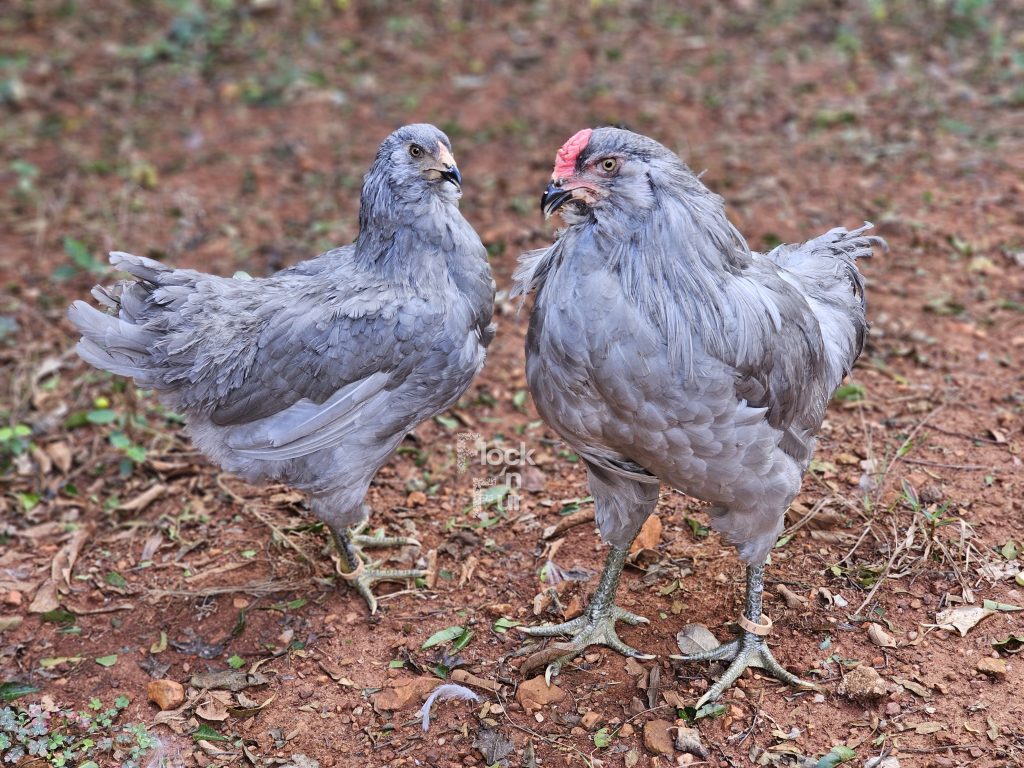
Lavender chickens often have a tendency to have poor feather quality, with feathers appearing shredded to some extent. To enhance feather quality, Lavender chickens are frequently bred to black chickens.
Lavender Genetics
Genetic Notations:
- The gene for Lavender is denoted as ‘lav’.
- The dominant allele, which does not produce Lavender plumage, is denoted as ‘Lav+’.
- The “+” indicates the wild type and may be omitted. The wild type refers to the most common or naturally occurring genotype in a population, which usually does not exhibit the trait in question.
Genotypes:
- lav/lav (two copies) produces Lavender (self-blue)
- lav/Lav+ (one copy) produces the base colour, i.e., Black
- Lav+/Lav+ (no copies) produces the base colour, i.e., Black
Chickens with one copy of the Lavender gene (lav/Lav+) are known as Lavender splits and will appear in their base colour (usually black if bred onto an extended black chicken). To determine if a chicken carries one or no copies of the Lavender gene, one must either conduct genetic DNA testing or know the genetic background of its parents. If one parent was Lavender, the offspring is guaranteed to carry at least one Lavender gene. However, if one or both parents were carriers of only one copy of the gene, the exact genetic makeup of the offspring cannot be determined without genetic testing. Visual identification is not possible for carriers of a single Lavender gene, as they do not exhibit the Lavender phenotype.

Why is Lavender referred to as Self-Blue?
Lavender is often referred to as self-blue because chickens with two copies of the Lavender gene (lav/lav) display a uniform, consistent blue-grey colour across their entire plumage. This even distribution of the blue colour throughout the bird’s feathers contrasts with the laced or patterned appearance found in other blue varieties, such as those produced by the Blue dilution gene (Bl). The term self-blue specifically refers to this solid and even blue colour without any variation or patterning, hence the alternative name for the Lavender phenotype.
Breeding Permutations
Below are the expected outcomes for various Lavender and Blue breeding combinations:
Blue Breeding
Blue x Blue

- Genotypes: Bl/bl+ x Bl/bl+
- Expected Outcomes:
- 25% Splash (Bl/Bl)
- 50% Blue (Bl/bl+)
- 25% Black (bl+/bl+)
Blue x Black
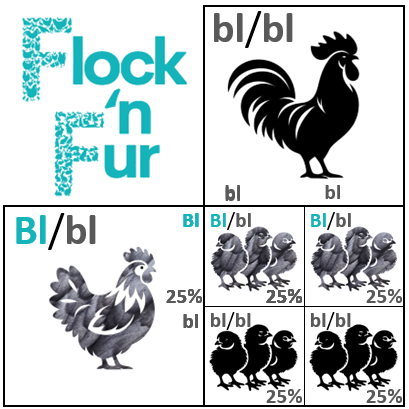
- Genotypes: Bl/bl+ x bl+/bl+
- Expected Outcomes:
- 50% Blue (Bl/bl+)
- 50% Black (bl+/bl+)
Blue x Splash
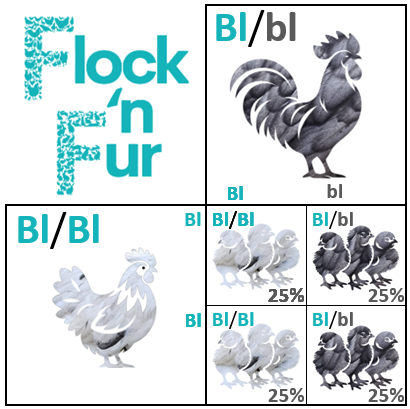
- Genotypes: Bl/b+l x Bl/Bl
- Expected Outcomes:
- 50% Splash (Bl/Bl)
- 50% Blue (Bl/bl+)
Black x Splash
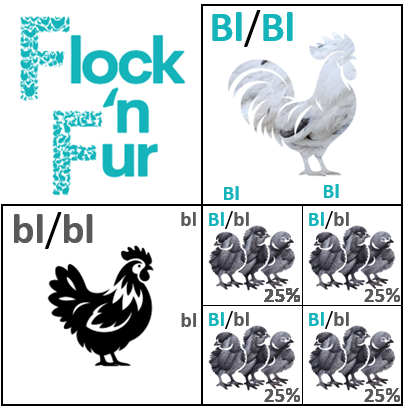
- Genotypes: bl+/bl+ x Bl/Bl
- Expected Outcomes:
- 100% Blue (Bl/bl+)
Black x Black
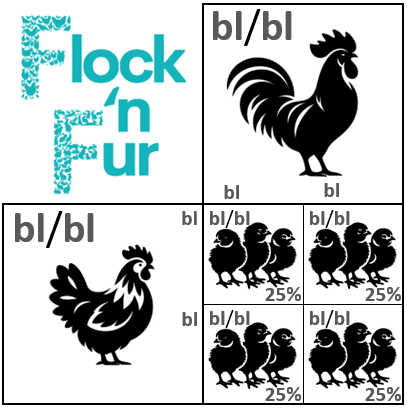
- Genotypes: bl+/bl+ x bl+/bl+
- Expected Outcomes:
- 100% Black (bl+/bl+)
Splash x Splash

- Genotypes: Bl/Bl x Bl/Bl
- Expected Outcomes:
- 100% Splash (Bl/Bl)
- Note: Breeding Splash to Splash is not recommended because it dilutes further, potentially resulting in a very light or completely white chicken.
Lavender Breeding
Lavender x Lavender
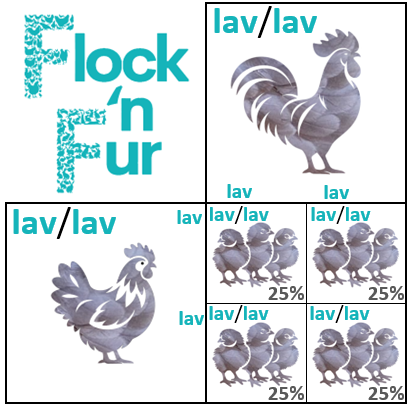
- Genotypes: lav/lav x lav/lav
- Expected Outcomes:
- 100% Lavender (lav/lav)
Lavender x Black
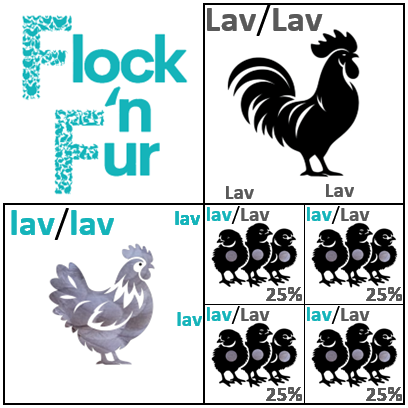
- Genotypes: lav/lav x Lav+/Lav+
- Expected Outcomes:
- 100% Lavender Split (lav/Lav+)
- Note: A Lavender Split appears the base colour, typically black, but carries one copy of the Lavender gene.
Lavender x Lavender Split

- Genotypes: lav/lav x lav/Lav+
- Expected Outcomes:
- 50% Lavender (lav/lav)
- 50% Lavender Split (lav/Lav+)
Lavender Split x Black
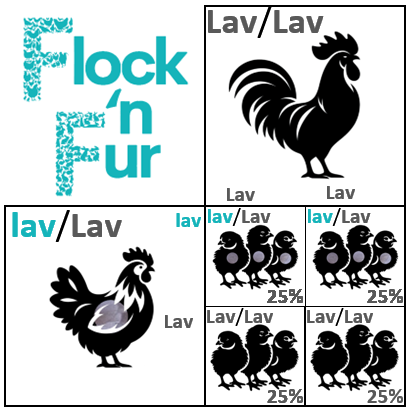
- Genotypes: lav/Lav+ x Lav+/Lav+
- Expected Outcomes:
- 50% Lavender Split (lav/Lav+)
- 50% The base colour, i.e., Black (Lav+/Lav+)
Lavender Split x Lavender Split
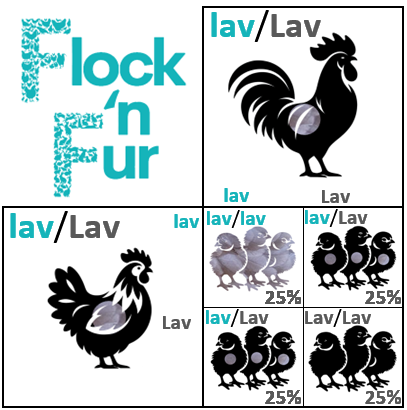
- Genotypes: lav/Lav+ x lav/Lav+
- Expected Outcomes:
- 25% Lavender (lav/lav)
- 50% Lavender Split (lav/Lav+)
- 25% The base colour, i.e., Black (Lav+/Lav+)
Example of Lavender x Blue Breeding
Breeding Lavender (lav/lav) to Blue (Bl/bl+) will result in offspring that are 50% Lavender Split (lav/Lav+) and 50% Blue Lavender Split (Bl/bl+ lav/Lav+). The Blue Lavender Split chickens will show blue plumage but carry one copy of the Lavender gene, while the Lavender Split chickens will appear their base colour i.e., Black but also carry one copy of the Lavender gene.
Conclusion
Understanding the genetic differences between Lavender and Blue chickens is essential for breeders aiming to achieve specific colour outcomes. By recognising the distinct genetic mechanisms and breeding permutations, breeders can make informed decisions and avoid disappointment.
In Summary: The Cheat Sheet

